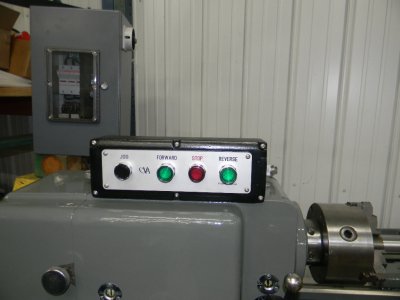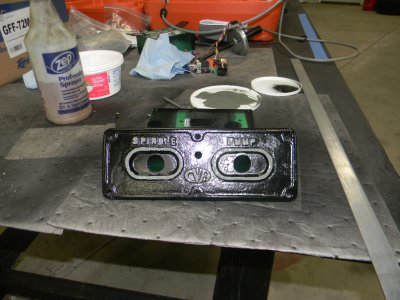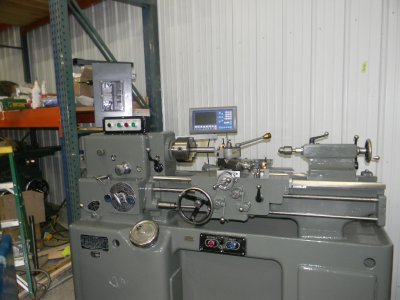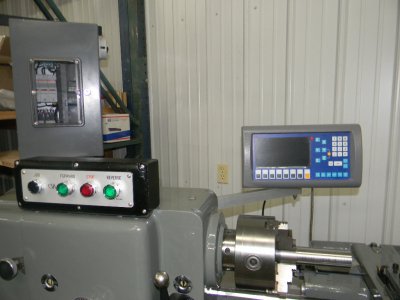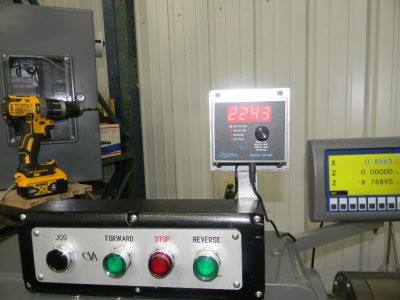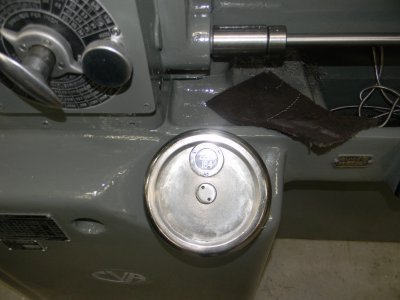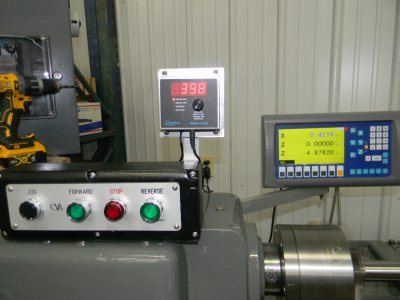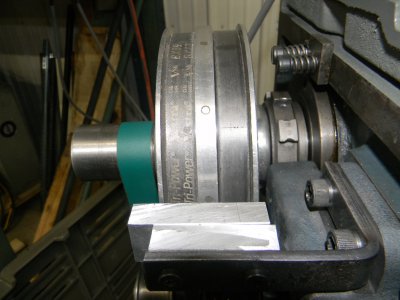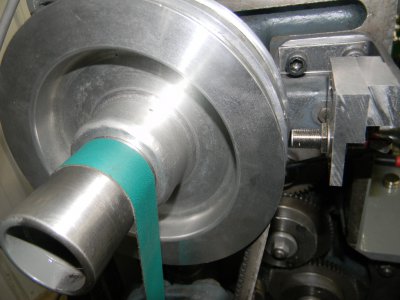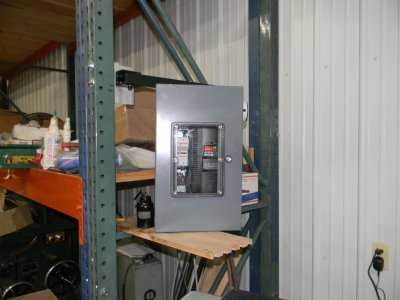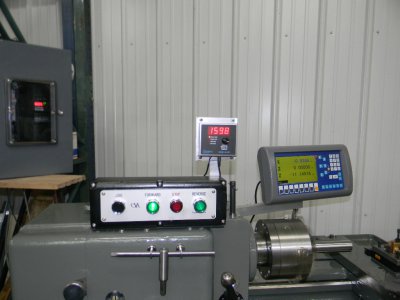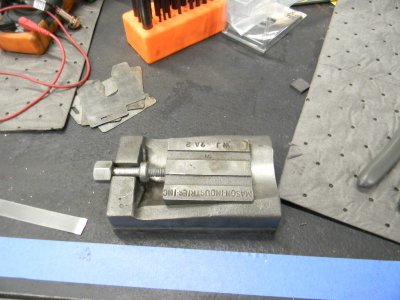CVA is running with Mark Jacob's VFD control system in place. Machine is leveled. It came with leveling shoes that are pretty neat to use. Like the 10ee, the CVA relies on only three points so leveling is very simple. My floor has radiant heat and I suspect isn't poured as thick as I would have done so I use patio blocks to spread the load. They are very flat and dense. I'm now within .0001 which is a good as I can measure and the finish quality is better than I am used to. The lathe, again like the 10ee, uses belts to operate the power feeds unless threading and those feeds are set very fine. That allows for a fast final pass with slow feeds and a very nice finish. The gearbox in the base and an open belt to the spindle also remove the gears from the headstock which improves the finish as well.
If I were designing a VFD driven lathe, ( that no one would want to buy ), 4-6 speeds in a separate gearbox would be my choice. Most of the new smaller machines rely on two ranges which sacrifices hp in the 500-1000 rpm range ( or the very top end depending on machine ). A few lathes have three or four ranges. I like my clutch as well but could give that up with a vfd.
Note Mark's work. It is second to none in function, safety, or beauty.
Dave


